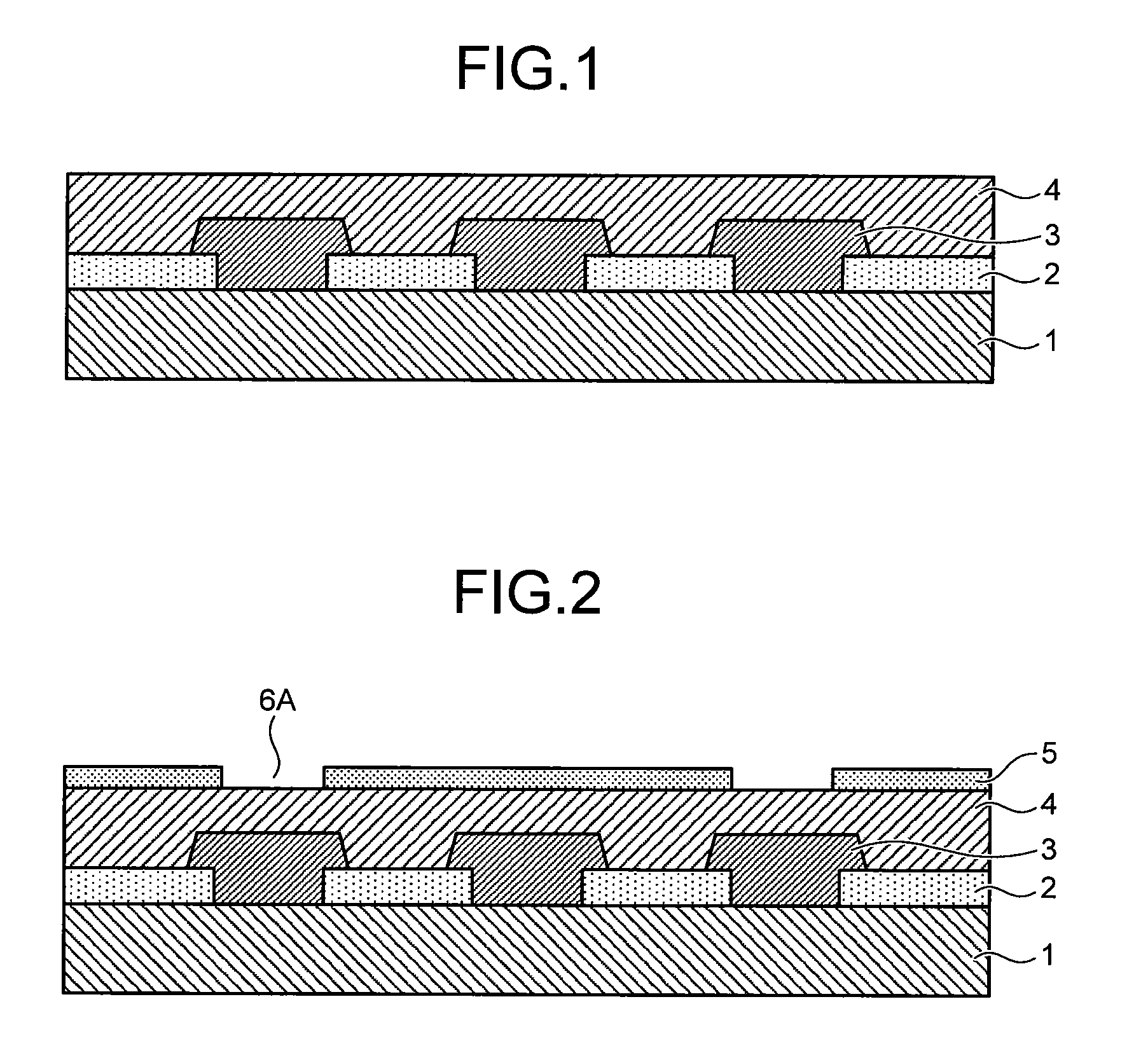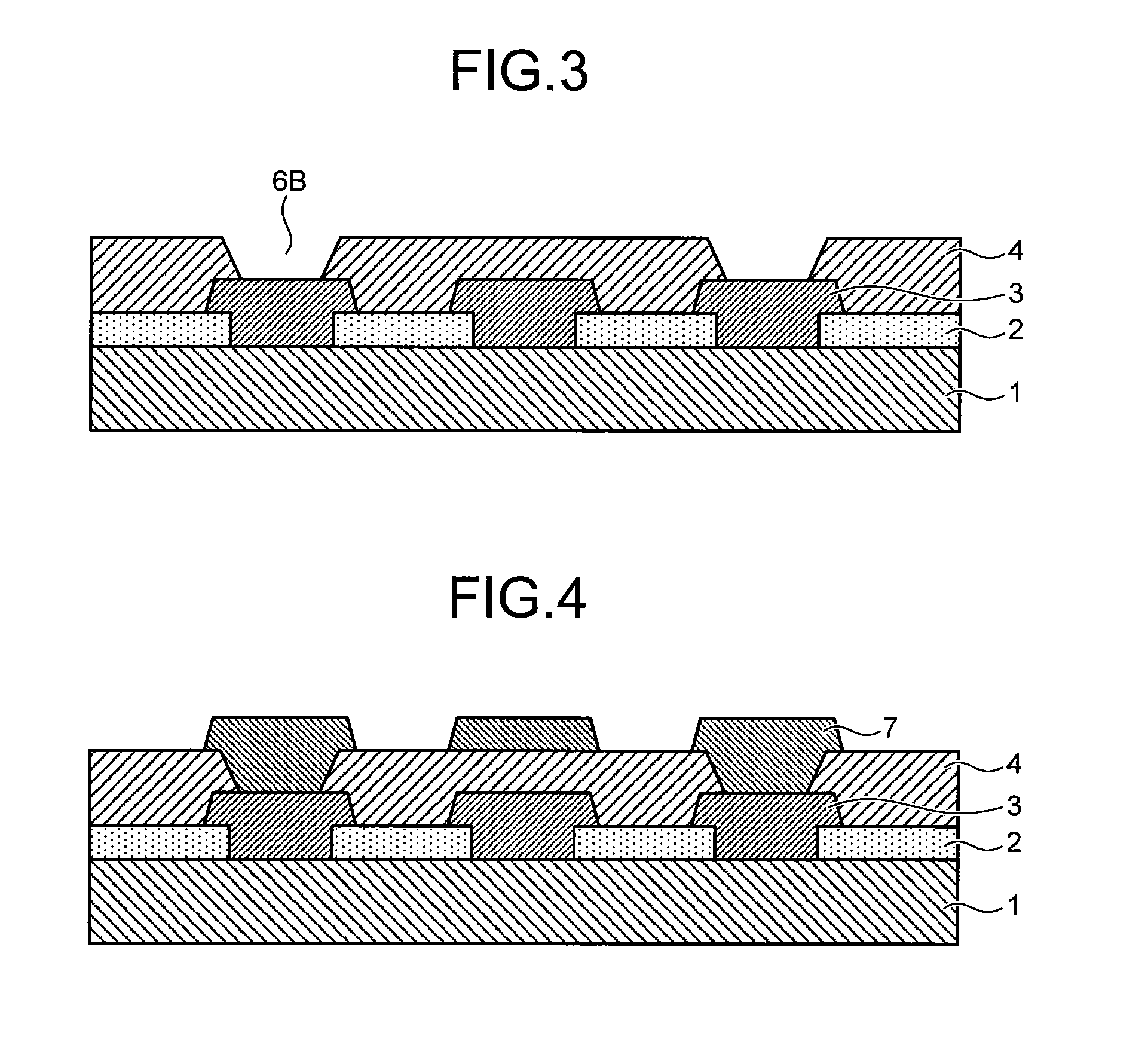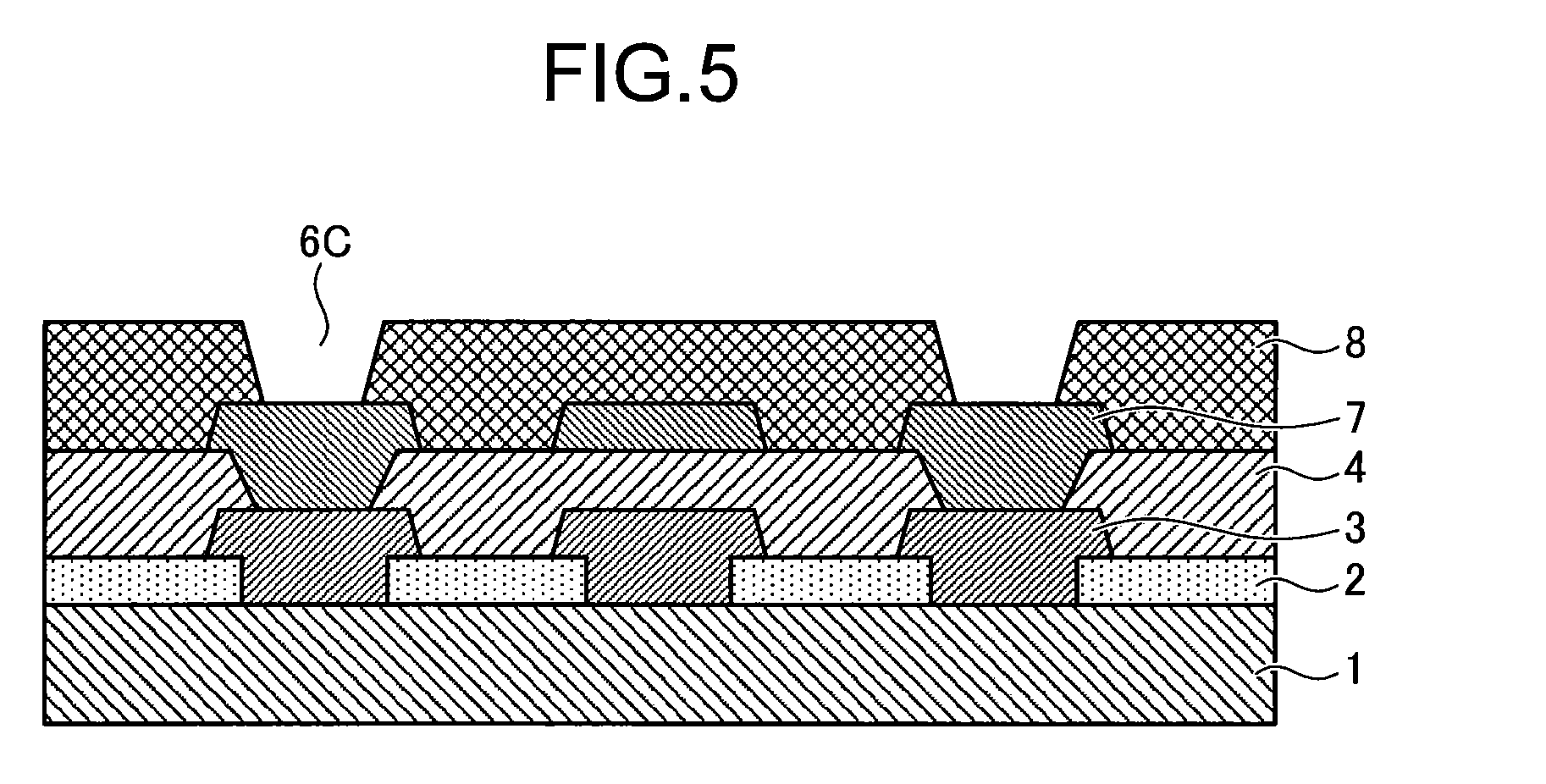Photosensitive resin composition, process for producing patterned hardened film with use thereof and electronic part
a technology of resin composition and hardening film, which is applied in the direction of photosensitive materials, instruments, photomechanical equipment, etc., can solve the problems of adversely affecting the substrate and generally poor film properties, and achieve excellent heat resistance, high cyclodehydration rate, and excellent sensitivity and adhesion. excellent
- Summary
- Abstract
- Description
- Claims
- Application Information
AI Technical Summary
Benefits of technology
Problems solved by technology
Method used
Image
Examples
synthesis example 1
Synthesis of Polybenzoxazole Precursor
[0185]60 grams of N-methylpyrrolidone was charged into a 0.2-liter flask equipped with a stirrer and a thermometer, and 13.92 grams of 2,2′-bis(3-amino-4-hydroxyphenyl)hexafluoropropane was added to the N-methylpyrrolidone and dissolved by stirring. Subsequently, 5.64 grams of malonic acid dichloride was added dropwise to the resultant solution over 10 minutes while maintaining the temperature at 0 to 5° C., followed by stirring for 60 minutes. The resultant solution was poured in 3 liters of water, and the deposited material was collected and washed with pure water three times, and then subjected to vacuum drying to obtain polyhydroxyamide (polybenzoxazole precursor) (hereinafter referred to as “polymer P1”). The polymer P1 had a weight average molecular weight of 11,500, as measured by a GPC method with standard polystyrene conversion, and the degree of dispersion was 1.7.
synthesis example 2
[0186]A synthesis was conducted in the same conditions as in Synthesis Example 1 except that malonic acid dichloride used in Synthesis Example 1 was replaced by succinic acid dichloride. The obtained polyhydroxyamide (hereinafter referred to as “polymer P2”) had a weight average molecular weight of 20,400, as measured with standard polystyrene conversion, and the degree of dispersion was 1.8.
synthesis example 3
[0187]A synthesis was conducted in the same conditions as in Synthesis Example 1 except that malonic acid dichloride used in Synthesis Example 1 was replaced by glutaric acid dichloride. The obtained polyhydroxyamide (hereinafter referred to as “polymer P3”) had a weight average molecular weight of 12,800, as measured with standard polystyrene conversion, and the degree of dispersion was 1.7.
PUM
| Property | Measurement | Unit |
|---|---|---|
| temperature | aaaaa | aaaaa |
| temperature | aaaaa | aaaaa |
| temperature | aaaaa | aaaaa |
Abstract
Description
Claims
Application Information
 Login to View More
Login to View More - R&D
- Intellectual Property
- Life Sciences
- Materials
- Tech Scout
- Unparalleled Data Quality
- Higher Quality Content
- 60% Fewer Hallucinations
Browse by: Latest US Patents, China's latest patents, Technical Efficacy Thesaurus, Application Domain, Technology Topic, Popular Technical Reports.
© 2025 PatSnap. All rights reserved.Legal|Privacy policy|Modern Slavery Act Transparency Statement|Sitemap|About US| Contact US: help@patsnap.com



